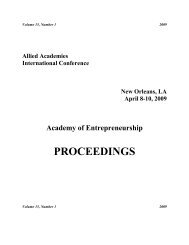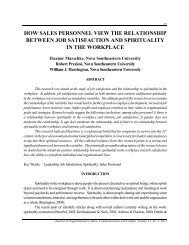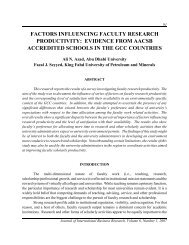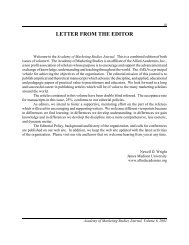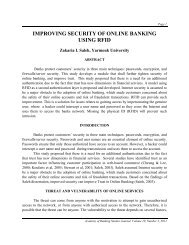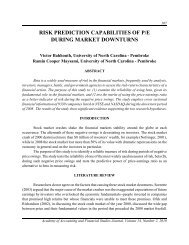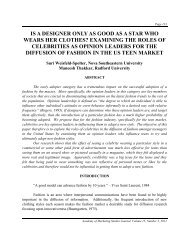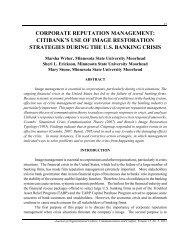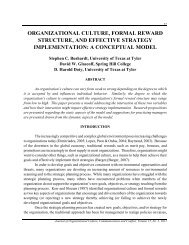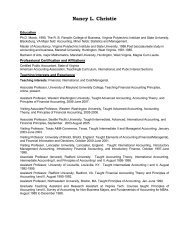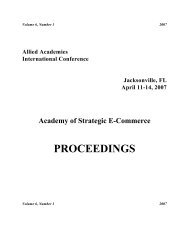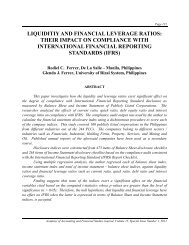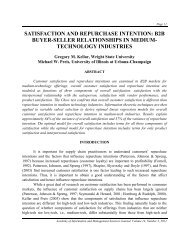AOCCC - Allied Academies
AOCCC - Allied Academies
AOCCC - Allied Academies
Create successful ePaper yourself
Turn your PDF publications into a flip-book with our unique Google optimized e-Paper software.
page 36<br />
<strong>Allied</strong> <strong>Academies</strong> International Conference<br />
aggressive is a warning. This can come in the form of a signaling, marking, or posturing.<br />
Animals engage in this type of behavior when staking out a territory by posturing, urinating or<br />
whistling. A simple example of humans doing this would be a child putting up a keep out sign<br />
on their room or club house. A second passive way of protecting a territory is developing<br />
barriers. These can be physical barriers such fences or walls or psychological barriers such as<br />
not listening to others ideas. More aggressive behavior can come in the form of enforcing laws,<br />
policies and rules. The most aggressive way to protect a territory is to fight for it.<br />
A dispute about or loss of territory can result in either positive or negative behavior. On<br />
the negative side, there can be anger and retaliation. Resentment can lead to the need for<br />
vengeance, punishment or restitution. On the positive side there can be resignation and<br />
forgiveness. This can lead to coping, adjustment, stabilization and positive reconciliation. The<br />
idea of a positive approach is willingness to give up territory or share it by accepting the<br />
reduction in the value or use of the objects, adjusting to new boundaries, and developing a new<br />
view of yourself.<br />
MANAGING TERRITORIAL CONFLICT<br />
Managing territorial conflict can be approached on three different dimensions. The<br />
simplest is a single dimension that measures aggression. It is essentially the flight or fight<br />
approach to defending a territory. The defensive behavior exists in a continuum ranging from, in<br />
descending order of aggression, flight, warning, barriers, enforcement, to the most aggressive<br />
behavior, fight.<br />
The second model is more sophisticated and is composed of two dimensions:<br />
assertiveness and cooperation. The behaviors of conflict resolution in this model include<br />
avoidance, competition, compromise, accommodation, cooperation, and collaborating.<br />
The third model uses the dimensions of the second model and adds the contingency<br />
factors of the value of objects and relative power of the aggressor. The size of the threat or loss<br />
is a combination of the value of the object and the relative power of the aggressor versus the<br />
power of the individual.<br />
The greater the potential loss, the greater the fear.<br />
The greater the power of the aggressor, the greater the fear.<br />
The greater the power of the individual, the less the fear.<br />
If power is equal and the value is high then cooperation and accommodation should be<br />
high. If relative power is low and the value is high then compromise or accommodation should<br />
be high. If the relative power of the individual is high and the value is high then competition or<br />
collaboration should be high.<br />
If the value for the individual is low regardless of the power differentials then avoidance,<br />
accommodation, or compromise should be high.<br />
REFERENCES<br />
Begann, J. K., & Brown, E. M. (1994). Association as a psychological justification for ownership. Journal of<br />
Psychology, 128, 365-380.<br />
Orlando, 2011<br />
Proceedings of the Academy of Organizational Culture, Communications and Conflict, V.16(1)



